
The Ultimate Content Marketing Guide For 2024
You’ve just launched your new business, and you’re ready to rumble! But wait, what about your content marketing strategy?
Time and experience have shown that traditional methods of the past no longer provide desirable results. Consumers don’t want to be overwhelmed with irrelevant ads.
They rather prefer to search for the solutions they need.
This is where content marketing emerges victorious.
So without further ado, let’s take a look at what the definition of content marketing is.
What Is Content Marketing?
The Content Marketing Institute provides a clear and concise definition. Specifically,
“Content marketing is a strategic marketing approach focused on creating and distributing valuable, relevant, and consistent content to attract and retain a clearly-defined audience — and, ultimately, to drive profitable customer action.”
But I bet you’re still wondering what it is exactly.
To put it simply, content marketing encapsulates every form of content created for the purpose of educating your audience and helping them take action.
Types Of Content Marketing & Content Marketing Examples
It may look like a no-brainer that content marketing is useful for almost every company.
However, the difficulty lies in deciding which are the most appropriate ways through which you will attempt to reach and convert your target audience.
To give you an idea of what content marketing entails, let’s take a look at the most common types of content you can use.
Blog Posting
For the vast majority of people, content marketing is associated with blog posts.
A blog post is the most popular form of content you can start with.
That’s because all you need to get started is a website and several relevant content entries.
The success of blogging lies in the consumers’ need to receive information through the Internet.
More specifically, blogging statistics revealed that 409 million people view more than 20 billion pages on a monthly basis.
A well-written blog with relevant information will help you create bonds with your readers and offer actionable advice.
Posting regularly is key to increasing your discoverability through search engines and boosting the chances of your content being discovered by your target audience.
For businesses, blogging is one of the most famous lead generating tools you can use to bring more customers on board.
To bring more quality traffic to your website, though, you need to show search engines that your blog content matters.
And to do that you need to keep a few search engine optimization aces up your sleeve.
Optimizing your content for SEO is of paramount importance to make your content appear higher in search engine results.
To start optimizing it, though, you need to keep in mind the following:
- Conduct extensive research and find keywords relevant to your topic.
- Choose the right keywords and use them in your content.
- Add visuals to make your written content easier to understand.
- Avoid plagiarism( Free tools to use: PaperOwls and/or Quetext.
Seo optimization along with blogging are the top two priorities for inbound marketing.
An excellent example of all of the above is illustrated in Moosend’s marketing blog.
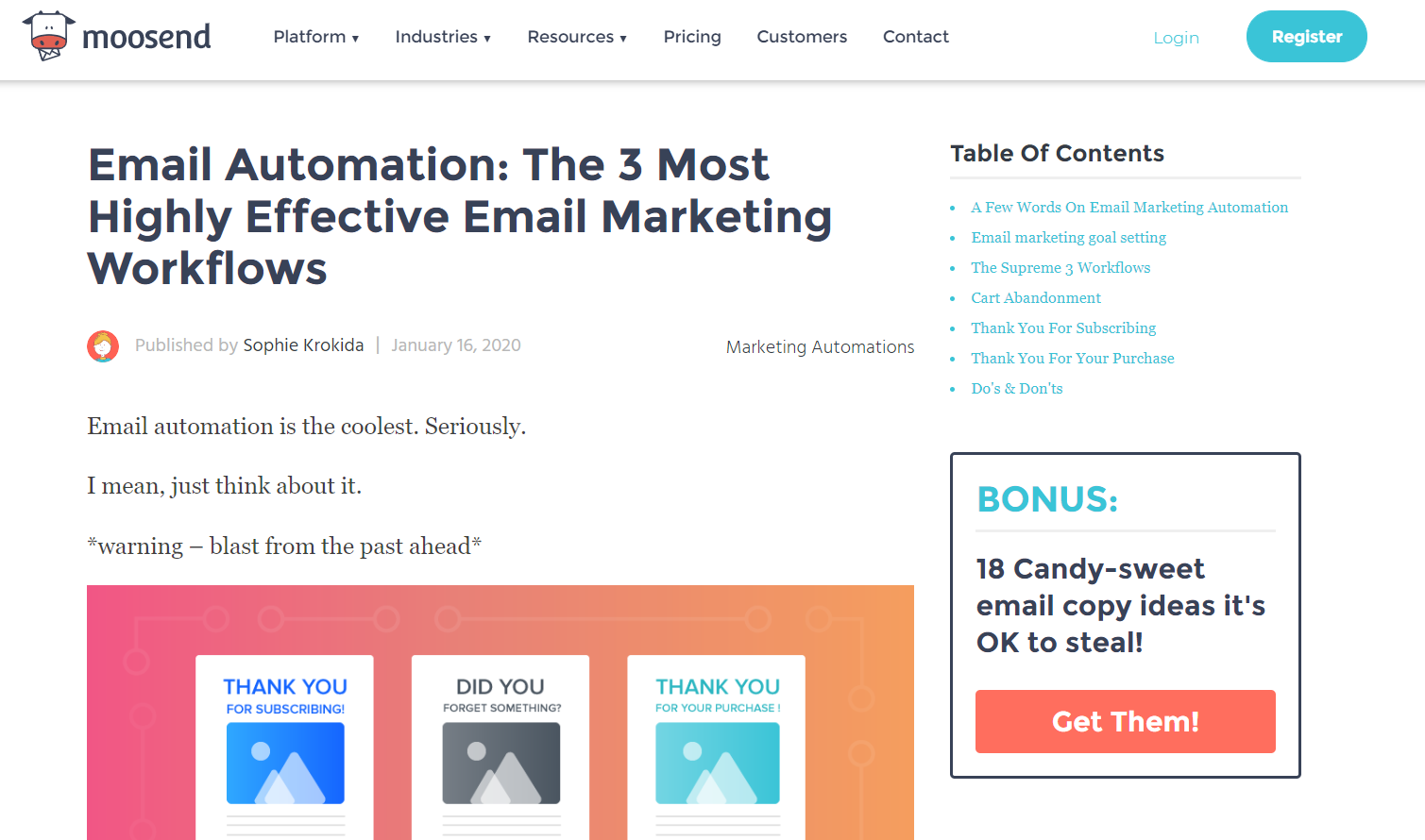
Visitors can find there a variety of case studies, step-by-step guides, as well as how-tos concerning email marketing best practices, email automation, and more.
This allows them to educate their audience, create a sense of community, and most importantly, offer a solution to a specific problem.
Videos
Videos are another type of content marketing that stands out as one of the most popular.
And if you’re wondering why, think of Youtube.
Imagine the endless possibilities that arise when you take advantage of a platform that is not only free but also easily accessible by millions of people.

Where blog posts might seem boring by some, video marketing easily achieves its purpose.
This is because videos have the ability to attract the attention of visitors and engage almost all age groups. Cool right?
What’s more, studies have shown that 54% of people have a tendency to watch videos from brands they trust and support.
Due to the flexibility that videos offer, marketers can create engaging content that will bring loyal followers.
Some of the most prominent video content marketing types are:
- Product demonstrations: in-depth videos presenting the features and advantages of a product
- Explainer videos: brief, on-point, animated videos created with the aim to inform about a product or service in the most efficient way possible
- Customer testimonials: user-generated content, featuring the “voice” of customers and acting as confirmation of the value of a product or service
- Behind the scenes videos: highly-authentic video content allowing customers to experience your brand and connect with you on a human level.
Now it’s time for our video content marketing example.
The video below gives an inside view of one of Facebook’s offices, allowing viewers to feel comfortable with the brand and create a sense of “bond”.
Infographics
Infographics are a must for successful content marketing.
This becomes obvious since 84% of people who have used infographics consider them to be an efficient content format.
The main characteristic of infographics is that they are fun, eye-catching, and particularly engaging for the readers.
Therefore, this makes them suitable for sharing on social media platforms where these characteristics are key to ensuring traction.
Sharing visual content which is both colorful and valuable, surely makes people look smart on social media such as LinkedIn, Twitter, etc.
And who doesn’t aspire to look cool to his followers or even friends? I guess nobody!
After all, we are social animals and love sharing valuable content that others can appreciate and benefit from it.
The reason why marketers tend to prefer this type of content marketing over others is that it combines the best of both worlds.
Of course, infographics are generally cheap to create. And marketers love producing great content at a low cost.
Delving deeper, infographics are able to boost the reputation of a product if tangible data is included.
Now imagine a high-quality piece of content in the form of an infographic getting featured on a prominent site.
This is going to be extremely valuable for the marketing team because it adds social proof in terms of credibility.
Infographics can also be a game-changer in “boring” niches since they capture and retain reader attention.
All in all, they utilize existing information and add more value to it by using pictures to capture the audience.
Here is a great infographic example by IBM:
Podcasts
Podcasts are another great content marketing type that many businesses seem to mistakenly ignore.
First of all, a podcast’s value lies in the convenience that it offers.
All you need to do is press play and listen.
So, a podcast is an excellent companion in our modern world where people need to multi-task.
What’s more, it is a good way to repurpose existing content into a podcast series for example.
To understand their true value, one must think of how mobile-friendly they are.
According to a survey, 69% of podcast listeners use a portable device.
Another thing to consider is that podcasts help build a loyal audience.
Providing you have some quality content to share with your audience, a strong connection will be formed and they are sure to come back for more.
Consequently, this may increase your conversions due to this trust in your brand and authority.
But that’s not all a podcast offers to a business. This content form can be used to establish your credibility.
If you provide valuable information that helps your audience solve a problem, they will gradually consider you an expert, since they’ll have heard it straight from your mouth.
This is vital in establishing your name or firm as a thought leader.
All this is great. Now let’s see a real example of a well-organized podcast by McAfee.
In this podcast, McAfee investigates the trending topic of cybersecurity, while at the same time busting some myths around it.
This helps them solidify their position as experts on such an important topic.
Additional reading material:
Webinars
Webinars are considered an effective content marketing channel. This is illustrated by the stats below.
According to Demand Gen Report’s survey, a high 66% of B2B customers prefer to watch a webinar before they actually buy a product.
So you understand straight away that webinars can increase your conversion rates.
Webinars usually involve the presentation of a product or service, along with an interactive Q&A session.
They are useful for companies because they showcase their products to audiences that are willing to use them.
Therefore, you understand that there is less friction since the customers have already decided upon using the product.
Webinars have also become increasingly relevant after the pandemic the world has been facing.
Why is that? Not only do they engage existing customers ensuring their trust, but also increase brand visibility which may attract potential customers.
Finally, webinars are a great idea for businesses to raise awareness around a particular problem they’re solving.
This will potentially lead more customers your way.
Here is an example of a free webinar.
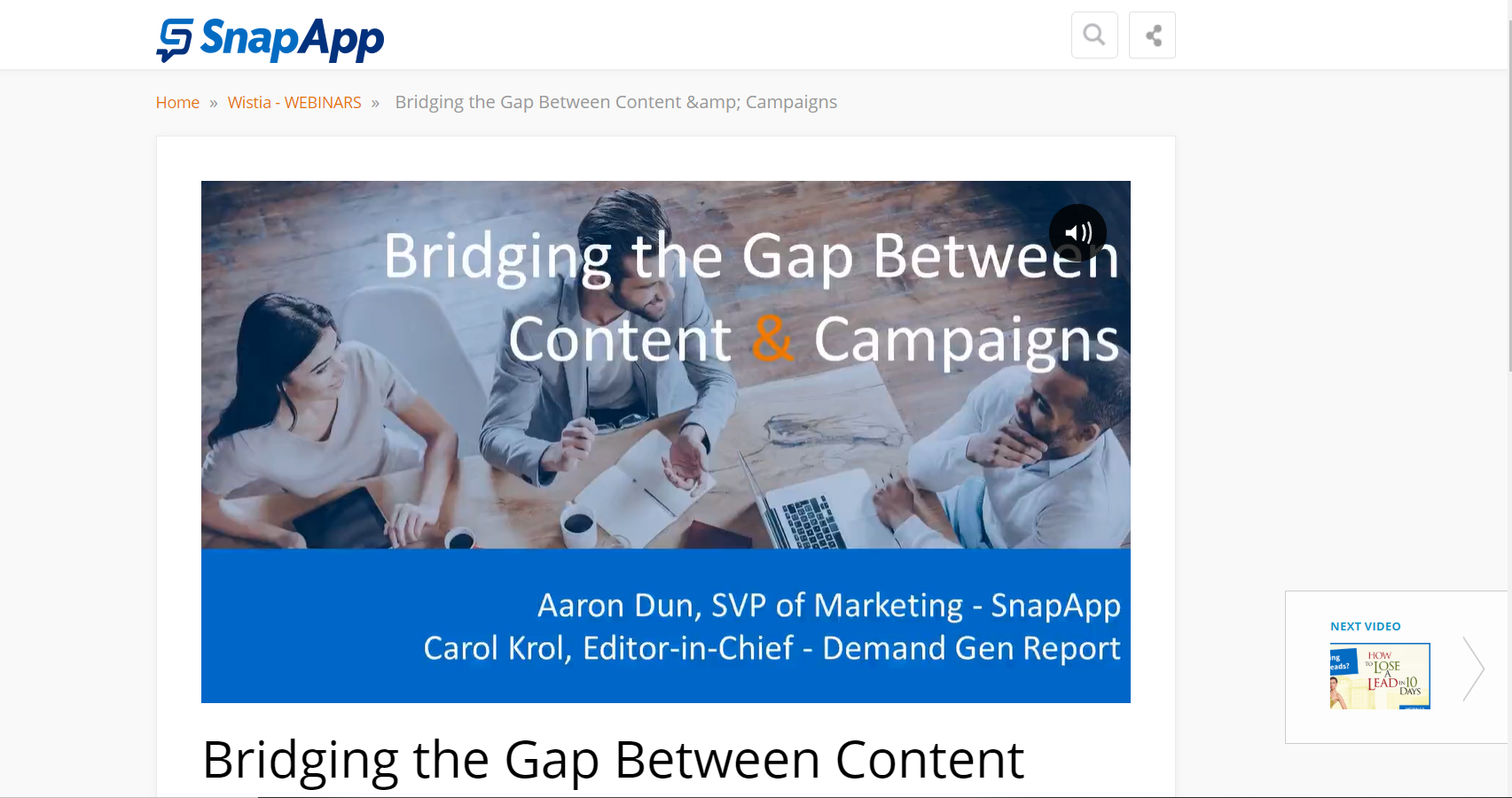
This webinar educates B2B marketers about how to increase audience visibility and improve conversion rates.
Why Is Content Marketing Important?
In the previous section, we explored the most prominent types of content marketing and some relevant content marketing examples.
Moving on to its importance, content marketing is a vital part of your marketing plan.
According to Hubspot research, 70% of marketers actively invest in content marketing.
This is because in comparison to other digital marketing forms, such as PPC it offers a greater return on investment (ROI) in the long run.
To clearly understand the value and importance of content marketing, though, we need to realize what solutions it aims to offer.
Improve Ranking in Search Engines (SEO)
I’m sure you’re familiar with the phrase “Content is KING”.
By creating high-quality content, which is relevant and informative for your audience, you are sure to attract more visitors.
How is this possible? Let me explain.
Google tries to provide the most relevant answer to what people are searching for. Your content creation helps improve your visibility in search engines.
As long as you provide high-quality content that answers the searchers’ questions, Google will rank your content higher.
For example, if you google “drip campaign examples” you can see that our resource ranks on the #1 position for that term.
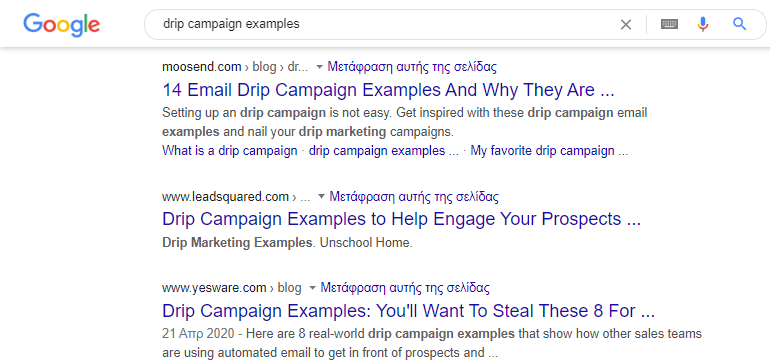
This happened because we’ve created one of the most comprehensive lists of drip campaign examples out there. You can check this out here.
So it is very important to create an optimized piece of content with relevant keywords since this makes your content rank high.
Build a relationship with customers (customer retention)
In case you were wondering, content marketing is vital in building relationships with your audience and customers.
It is known that people return to websites that they are familiar with and trust. This also raises the reputation of your brand.
According to an infographic from CustomersThatStick, the value of loyal customers is up to 10 times as high as their first purchase.
So if you’re able to create a positive experience for your customers and they have a good impression of you, then you have achieved customer retention.
The bottom line for you? More revenue!
Help convert leads into customers
The reason why content marketing is so important is that it attracts quality leads.
The more you create content that educates your audience and adds value to them, the more you build trust and improve your relationship with them.
According to Aberdeen, conversion rates from content marketing are about 6x higher than other digital marketing techniques.
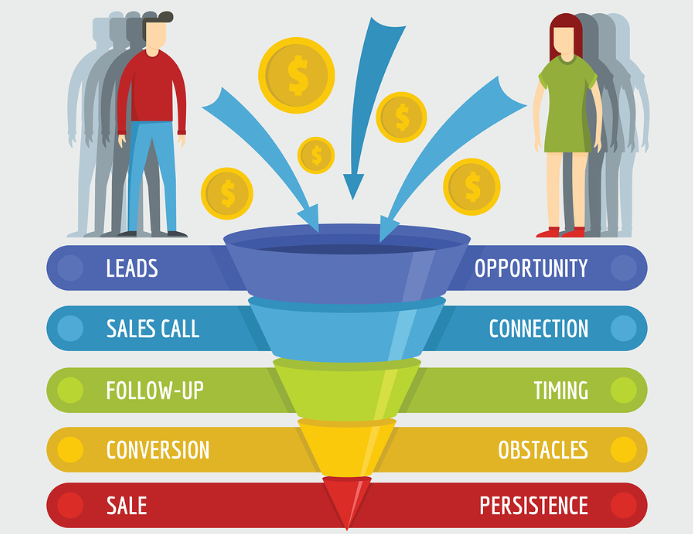
Therefore, it’s clear why this plays a major role for content marketers.
And of course, if you can keep your content consistent and high-quality, some visitors will be more than happy to click on your landing pages.
After all, you have provided them with the necessary information to make an educated decision to purchase upon the trust that’s been built.
So be sure to include a call-to-action (CTA) in order for the reader to know what you want him to do after viewing your content.
Raise brand awareness
It’s probably a fact that the majority of people don’t know about your business. And this isn’t something that can change overnight.
When you put quality content out there, you are exposing people to a brand they didn’t know before.
And it’s important for people to recognize your brand. Not to be able to distinguish your logo but to recognize what it represents.
Brand awareness is very important because it is the definitive factor tipping the scales between purchasing from a brand or backing down.
Finally, the importance of brand is illustrated by the fact that 77% of B2B marketing leaders agree that branding is critical to growth.
Therefore, more brand awareness means more leads.
Build a Community
The term community refers to a group of people who are bound to something by a feeling of togetherness and belonging.
I believe you understand why it is important to create a community of people in your niche.
Building a community is beneficial in showing people that you care about them and you want to establish a relationship with them, not just market your product.
It may seem like hard work to get the community to trust you, but eventually, this will happen.
As soon as this happens, the community is about to start growing. And we all know how critical the word of mouth is for a business.
This could very well turn you into an expert in your niche.
But that’s not all there is to a community.
Members of a community usually help each other, without the company necessarily interfering in the whole process.
This might as well translate into your support team having a more manageable workload.
Finally, an active community could be the source for acquiring genuine testimonials from the people.
A vivid example of building a community is Buffer. They believe that only amazing things can happen when people connect with each other.

Content Marketing Strategy
Now that we have established that content marketing is of utmost importance, we’ll see how to create a strong content strategy.
Simply put, content strategy involves the management of the creation and distribution of your content.
If you had been expecting a “secret content strategy sauce” to be revealed before your eyes, well, you’re out of luck. Because it doesn’t exist.
What does exist, however, is a list of 9 steps that if you follow, you are sure to succeed in creating a content strategy that will help your business grow.

Let’s take a look!
Set your goals
Before you start creating, it’s essential to document what it is you expect to gain.
Potential goals could be to:
- Get more traffic
- Improve revenue
- Build relationships with your customers
- Boost conversions
- Gain authority in your niche
- Increase engagement in social media
- Attract partners
By establishing your goals, you avoid getting tangled with how and what content to create.
This way it’s easier to determine what your business needs and at the same time ensure that your goals are sustainable long-term.
Determine your KPIs
In order to achieve your goals, you need to make them specific as well as measurable.
So, you need to set some key performance indicators (KPIs).
In a nutshell, KPIs are quantifiable data that enable you to evaluate your performance against your goals.
These KPIs will facilitate your effort to reach your goal, by setting the milestones that you have to achieve.
They might refer to traffic, revenue, SEO, and digital marketing aspects, such as social media metrics and email marketing to name but a few.
Let’s see some examples real quick.
You may aim to:
- Reach a specific number of new email subscribers
- Improve search engine rankings of some of your pages
- Increase organic traffic to a specific level
- Reach a certain target revenue
- Acquire a designated number of mentions, backlinks, etc
Understand your target audience
To have a successful content marketing strategy, you need to find out who your target audience is.
This helps you create relevant content in order to be able to reach them.
To do that, first, you need to collect demographic data on your visitors, email subscribers as well as social media followers.
Such data include age, gender, country, income, etc.
To acquire this data about your audience you can use tools such as Google Analytics, Facebook Page Insights, and Twitter Analytics.
All of these are useful. Sure.
But you could tap into an abundance of insights if you collected feedback from your existing customers.
They could share their feelings about your current content as well as identify pain points that you could address with your content.
By acquiring demographic data along with customer feedback, you’re able to create the so-called buyer personas.

In essence, buyer personas are customer avatars that distinguish your ideal customers and visitors so that it’s easier to target them.
For example, these personas:
- help you stay relevant
- differentiate your brand from the competition
- prioritize your leads
Figure out the type of content you’ll create
The next step is to decide the type of content that you’ll create.
Different businesses have different needs, so, this is going to be a long and serious process, since one size fits all doesn’t apply here.
In the previous sections, we saw the most popular types of content. The list, however, is almost endless ranging from blog posts to white papers, polls, and much more.
This is why you’ll need to think about your target audience and buyer personas to make a decision.
What keywords are they using? What problems are they trying to overcome? How can you help them fulfill their purpose?
Answering these questions will help you understand what type of content you need to create for maximum effectiveness.
If you’ve just started your company or your in-house resources are limited, it’s possible that you won’t be able to utilize the full content type spectrum.
Don’t let that scare you though!
The data on your personas and your target audience are the only true guide for a successful content marketing strategy.
Let’s see an example of what we’ve been talking about.
Lush cosmetics wanted to deliver impactful content that would continuously captivate their community, without breaking the bank.

They achieved it by using customer-created content in the form of photos and videos.
This helped them both build brand awareness and ensure brand loyalty.
Choose the best content channels
You’ve decided on the type of content that you’ll go with. Now it’s time to select the appropriate content channels.
Channels can include your own website or blog, or even social media platforms such as Twitter and LinkedIn.
Sometimes the channel you’ll need to choose is obvious.
For instance, if you’re publishing blog content, the channel shall be the blog itself.
Social media is a different case, though.
To decide which platforms you’ll be marketing on, you need to research where your audience spends most of their time.
This will ensure that your content has the highest chance of being seen, therefore having more engagement.
Social media analytics and demographics will also pinpoint which platforms are worth investing in and which would be a waste of your budget.
For example, making social media posts on Snapchat could be a bad idea if you’re targeting older generations.
Identify requirements and set the budget
Now it’s time to make sure that you have all the necessary tools to deliver on your content marketing strategy.

So ask yourself the following indicative questions to determine your course of action:
- Do you need to hire any members, such as writers, designers, or editors for your content team?
- Do you need to purchase any equipment (such as cameras or mics, for videos and podcasts) or software tools (such as Adobe Photoshop, Canva, or other tools similar to Photoshop) that will assist your content marketing efforts?
- Are you going to buy ad space?
- Do you have the necessary resources to enhance your content?
Answering these questions will pretty much outline the budget that you’ll need to spend to proceed in content creation.
This process will also indicate whether there was an increase or decrease in the estimations you had previously done.
Create an editorial calendar
An integral part of your content strategy shall be the creation of a content calendar.
It is essential to know when you plan to publish a piece of content and which platforms will be used.
Lack of scheduling could be a grave mistake. So don’t ignore it!
Assuming you’re not producing tons of content, Google Calendar is an excellent tool for you to put the due dates there.
On the other hand, if you’re managing a whole team and producing loads of content, then solutions like Asana, CoSchedule, Notion, and other alternatives would be more helpful.
Create and Distribute content
It’s plain as day now that it is a long way before the actual content creation time.
But at this step, it’s time to do just that.
The first thing that needs to be done after you decide on a topic is research.
This involves figuring out what’s already out there and how your own content will add value to the existing ones as well as your audience.
You’ll need to do a Google search and explore the top-ranking content and decide how you can improve on it.
It would benefit you tons if you also did keyword research.
This will lead to better SEO and improved visibility for your brand new piece of content.
Now, CREATE AWAY!
The only thing that needs attention is not patronizing your audience. So keep that in mind.
The next part consists of the distribution.
Don’t get all tired now, because distribution is equally important with creation.
Even the best content won’t make the expected impact if you don’t promote it correctly.
Therefore be sure to follow the rules of each medium that you distribute your content with, in order to achieve your goal.
Some distribution examples include:
- Email marketing, to distribute to your subscribers
- Social media sharing through posts, tweets, etc
- Inform major influencers about your new content
Analyze and Assess results
Finally, it’s time to evaluate your content marketing strategy.
So, you’ll need to revisit those goals and those KPIs that you established at the beginning of your plan.
This will allow you to define what resonates with your audience and what pieces of content to produce next.
Moreover, it will indicate what changes need to be made in order to improve your content marketing efforts and attract more viewers.
To get this information, hit Google Analytics or any social media analytics dashboard and take a look!
Did you achieve your goals? Did your content bring the desired organic traffic to your site and hit the number of likes and shares you had opted for?
These are some questions you’ll face. And based on the results, you’ll optimize your marketing tactics accordingly.
Don’t forget to make an analysis and evaluation of your process, in order to establish what checkpoints you want to beat for next week, month, year, and so on!
Content Marketing Campaign Cost
To clearly look into the cost of content marketing campaigns, we need to break it down into two categories, namely the costs for content creation and the ones for distribution.
Content Creation Costs
By this point, you’ve seen examples of content marketing, how to do it properly and the importance it plays in the growth of your company.
But how much money are you expected to spend on content marketing?
Let’s start with some content marketing statistics.
According to DemandMetric, content marketing costs 62% less than outbound marketing and provides 3x better lead generation.
Definitely worth investing I’d say!
To talk numbers, though, we need to categorize content in order to look at costs more meaningfully.
Written content
The simplest type of content to create is written content and it comes in various forms such as blog posts, articles, downloads, etc.
Costs mostly depend on who is writing your copy.
The first option is to hire freelance copywriters.
Some of them prefer to charge by the hour and others per word written.
You can expect prices to range from $15-105 per hour depending on the writer’s experience or $0.03-0.30 per word accordingly.
Moving on to marketing agencies costs are expected to rise vertically.
You’re looking at a cost varying from $1000 to $2000 for approximately 600 words of content.
This is mainly because the copywriters on their staff have experience writing for marketing purposes and optimizing content for search engines.
If you choose to do it in-house, your cost is your time.
Keep in mind that a page takes around 3 hours to be written.
So, if you can’t spare the time or you’re too busy with other tasks, the most cost-effective alternative would be hiring a freelancer.
Visual content
With this term, I am mostly referring to infographics and their “fancier” sibling animated infographics.
For this form of content, you need the expertise of a good designer. And this isn’t cheap.
The cost of employing a freelance designer is going to be from $100 up to $500+ per graphic.
Prices vary since some designers require additional fees for revisions, research, etc. So be prepared beforehand.
Should you choose to go with the option of an agency, expect costs in the price range of $2000-8000.
The prices show such variation because agencies usually include graphic design as part of their other plans.
It must be mentioned that you are going to pay a high price for an animated infographic since it requires an experienced animator.
In case you’re comfortable with doing all these in-house, you can use free software such as Canva, or paid tools like Visme and Adobe Illustrator.
Software like these typically costs around $20-$80 per month.
You should expect greater investment in time though, in comparison with written content.
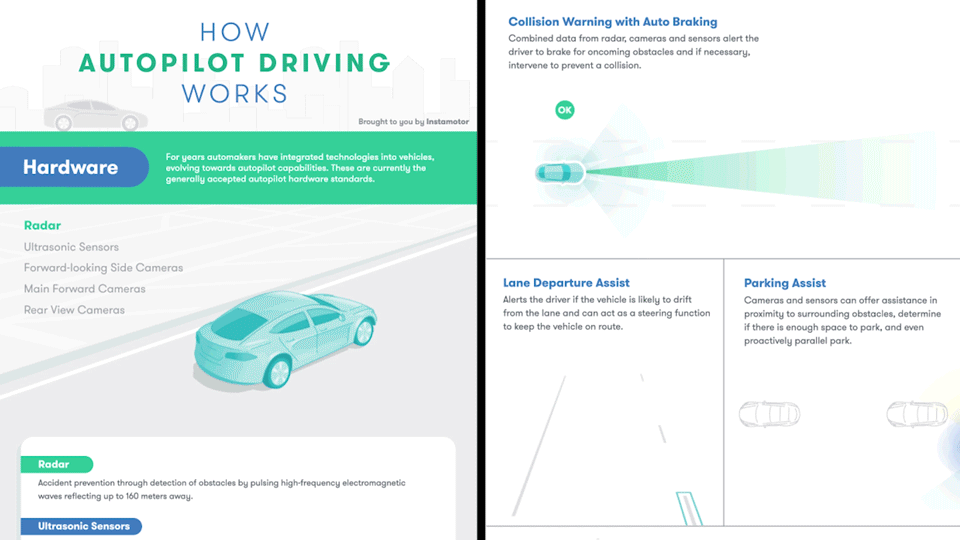
Videos
Videos are a category by themselves.
Not many freelancers specialize in video production.
What’s more, most marketing agencies don’t offer this as a service yet and will probably ask you to partner up with a video production agency.
Generally, the price range for videos is enormous because it depends on their length and the complexity of the shoot.
Understandably, a 30-second video costs significantly less than an in-depth 10-minute video.
It’s important to check each agency’s pricing model, before making the final decision.
This is advisable because some of them charge by the hour, plus editing and costs for production, while others charge by the project.
You wouldn’t be too happy to pay more than you had originally planned. So research first!
It’s finally time for numbers.
The average of what agencies charge is $1,500 per minute or $1,200-$50,000 per project.
Assuming you have the necessary equipment to attempt video production, you could do it in-house.
But since it is extremely time-consuming, it will require some dedication to create both visual and written content.
Content Distribution Costs
Content Promotion Through Ads
You could approach paid content promotion through social media ads.
Facebook Ads seems to be the most popular paid content promotion channel, according to Social Media Examiner.
Prices obviously depend on a lot of factors, but generally, you can reach thousands with as low as £10 per post.
![]()
LinkedIn ads are another option.
They are a tad pricier but they could provide a lot more value for B2B companies.
The cost is $6 on average for a thousand impressions (CPM).
Another approach would be a service like Outbrain.
Outbrain is a native advertising network that promotes content by targeting the users’ behavior when consuming pieces of content.
Here costs are significantly lower with an average of $0.10 cost per click (CPC).
Of course, these are only some of the available solutions for content promotion through ads.
Email Marketing Costs
Supposing you’re managing your campaigns, you probably have some kind of email marketing service.
The typical costs of such platforms are illustrated in the picture below.

If you’re just starting out, a good idea would be Moosend’s email marketing software, which you can try out for free by signing up for an account.
Additionally, you can see the average of how much an email marketing specialist would cost to employ.
And remember! Email marketing is a tremendously cost-effective strategy offering a high ROI of $42 for every $1 you spend.
SEO and Link Building
An excellent solution for content promotion is link building.
The typical price you should expect to pay is between $100-600 per link, depending on the quality.
Anything above these prices is considered to be “expensive” and relates mostly to industries like casinos and finance.
I must also highlight that buying links is not advisable. Mostly because some vendors can be sketchy.
So, what you practically do is pay someone to create content like guest posts in order to promote your resource.
Influencer Marketing
Influencer marketing has grown to be one of the most effective ways to reach your target audience on social media platforms, such as Instagram, etc.
However, it’s difficult to calculate costs for this form of content promotion since influencers rarely share their fees publicly.
Rough estimates show that a typical cost starts from $10-25 per 1000 followers and escalates accordingly.
What you need to do in order to succeed is find the appropriate influencer that will boost your brand and not exterminate your budget.

Conclusion
End of the line dear reader!
But this isn’t your typical conclusion where I just restate the facts blah blah blah and sign off. I’m gonna set you off on the magical journey of growing your business with content marketing.
You now believe in the heart of content marketing!
So decide on a topic relevant to your niche and write your first blog post. Don’t expect crowds to come by the masses. With the help of good SEO tactics, you’ll manage to increase your visibility and rank in search engines.
Build links with trustworthy partners and be sure to PROMOTE your content actively. Even the greatest content will struggle to ascend if nobody knows of its existence.
Therefore, share it on social media and spread the word through your friends about the new killer article you just wrote giving a new angle on a trending topic.
Evaluate its success through the metrics and if everything has gone according to plan, you’ll be able to do it again.
Now think about how you can scale your success and utilize the other available types of content marketing.
I believe in you. Because no one was born great. They became great.
And you can too!








